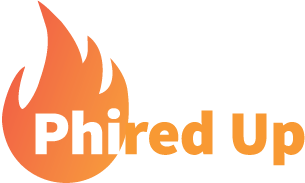Getting Students that “Get It” RESEARCH REPORT
The results of the first phase of Phired Up’s first research project are in and we are phreakin’ excited about them!
Download the full research report here:
This study represents a major first step in the direction we want to push our fraternity/sorority partners in thinking about organizational growth. To put it plainly, our 100+ year-old organizations have done a poor job of gathering helpful data to support decision-making around the most important part of our operations – recruitment. Everything we do (and don’t do) springs from the way we recruit. We are proud to significantly add to the base of public knowledge surrounding recruitment and membership selection.
Through years in the field of fraternal advising, we’ve noticed a trend: many organizations are seeking a sustainable, data driven process by which they can select the members that are most likely going to fit, persist, and succeed in their organizations. This study, “The Best of the Best Assessment” sought to examine common traits and common life experiences of fraternity and sorority students who are the best of the best. The best of the best students are defined as those who are exceptionally excellent. These members stand out among all the rest. We define common traits as a skill or personality characteristic (e.g., making others happy, kind, smart) and life experiences as a concrete encounter, situation, background, or condition. Examples of life experience include athletic involvement, large family, or chess player. Our primary focus was to answer the overarching question: What makes the very best members of fraternities and sororities?
Here is how we began to answer that question:
We asked over 100 professionals open ended questions to identify common themes, interviewed and/ or surveyed almost 200 best of the best students themselves to find out their traits and experiences, and analyzed the results of all three of those methods. We used a technique to analyze this data called “coding for words and themes”. The analysis resulted in the 15 themes you see below.
BEST OF THE BEST STUDENTS ARE:
- Altruistic- Students who are compassionate and passionate about service
- Change-Makers- Students who are not afraid of change and are excited about it
- Passionate- Students who “get it” and really love being Greek
- Outgoing Listeners- Students who are outgoing but still really value listening to others
- Reliable Work Ethic- Students who are very reliable and work really hard
- Respectful and Inclusive- Students who respect diversity and get excited about including everyone in decisions and social situations
- Values Focused- Via religion or personal commitment they are able to articulate a strong set of values
- Conference Attending- Students who have attended a leadership conference (although we do not know the causal effect)
- Focus on Family Dynamics- Students are supported by at least one family member and are often members of large families, many are the oldest child
- Involved- MEANINGFUL involvement in outside groups in high school and college, positional leadership is also important
- Employed- Many of them are financially responsible for a portion of their education or college experience and therefore hold jobs
- Learners- They love learning and going to class, they are not 4.0 students but they dig school
- Mentees/ Mentors- Students have a mentor and mentor others
- Travelers- Many have traveled extensively and abroad
- Those That have Overcome Adversity- They have all overcome significant adversity in their young lives.
What we are doing next? We are now creating and testing a survey to measure whether or not a potential new member is a best of the best student. We are testing that survey for content and construct validity to make sure you get the most valid and reliable tool possible. We are also creating a values based selection criteria for use during more formalized recruitment processes. When this is all over, communities, organizations, and individuals will have a reliable and revolutionary way to select members.
Good research always sparks more questions. We would love to hear yours! Here are just a few from our staff:
- What if our expansion/extension professionals and recruitment chairs had objective data-backed tools to determine qualification for membership based on likelihood of high-performance (instead of gut feelings)?
- How do our fraternity/sorority professionals provide more educational opportunities that help to unearth and cultivate these “best of the best” students?
- How do the traits and experiences of “the best of the best” students differ for each organization? How can we help organizations answer that question? How do culturally-based groups differ from NIC/NPC groups? What do gender differences in traits and experiences tell us?
- What systems, processes, assumptions, and culture does this small piece of research strongly challenge within our communities?
At Phired Up we are all about innovation but nothing can ever be innovative without participation. Your participation in this research study through answering questions, being supportive, participating in interviews, or just plain getting phired up about it were vital to our work. Thank you! Be on the look out for even more from the Phired Up research area. Until then- keep on being curious…
